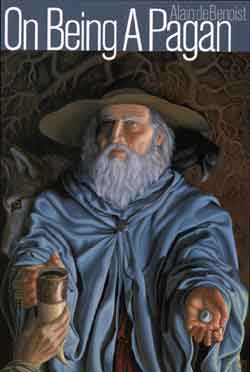
Alain de Benoist. On Being a Pagan

Alain de Benoist is author of more than fifty books, and is a well-known figure of the French New Right. First published in 1981, this is a challenging book that, however one responds to its author's arguments concerning paganism and Christianity, effectively encourages its readers to reconsider what they think and why they think it. On Being a Pagan contains references to Jacob Böhme, Meister Eckhart, Paracelsus, Julius Evola, and many other authors. The book is published by the same press responsible for the journal Tyr, noted in the past two issues of Esoterica. Recommended.
ISBN 0-9720292-2-2 $20.00
(Atlanta, Georgia: Ultra, 2004) email: ellecampane@bellsouth.net
available from: Ultra Press, P.O. Box 11736
Atlanta, Georgia 30355 USA
Temenos Academy Review 2004: Kathleen Raine Memorial Issue.
Edited by Brian Keeble.
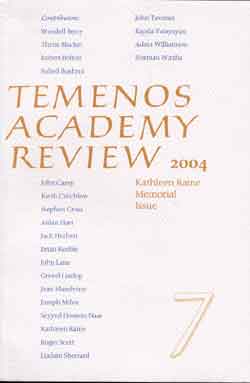
This is a collection of essays in tribute to Kathleen Raine. It is an overview of the depth and complexity of the whole range of Kathleen Raine's work as a poet, scholar and teacher in relation to the idea of tradition.
(Temenos Academy, 2004).
253 Pages.www.temenosacademy.org/temenos_journal.html
ISSN 1461-779X
The Betrayal of Tradition.
Articles by Titus Burckhardt, A. K. Coomaraswamy, René Guénon, S. H. Nasr, and various other Traditionalists, as well as by Karen Armstrong and Dorothy Sayers.
Edited by Harry Oldmeadow.
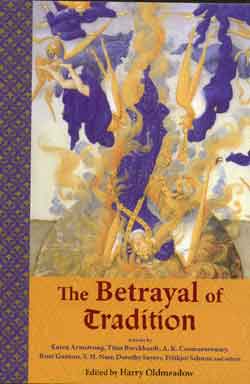
“Harry Oldmeadow has collected in this book twenty-five compelling essays...from key perennialist authors and other eminent thinkers. Divided into five sections, their responses treat the opposition between Tradition and Modernity, Perennial Truths and Modern Counterfeits, Social Order, the ‘Single Vision’ of Scientism, and lastly the Destruction of Traditional Cultures.”--Jean Biès, author, philosopher and poet.
Part of the Perennial Philosophy Series.
(Bloomington: World Wisdom, 2005).
386 Pages.www.worldwisdom.com
ISBN 0-941532-55-0
Thomas Garret Isham. The Dimensions of the Enneagram: Triad, Tradition, Transformation.
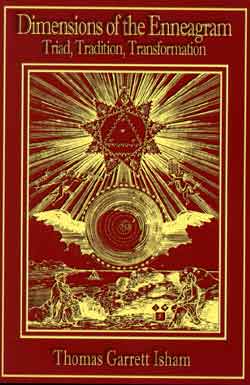
“Thomas Garret Isham's second book on spirituality and the Enneagram...shows erudition, scholarship, compassion, tolerance, and insight in equal measure. His analyses of Biblical characters in terms of the nine personality types are particularly interesting and memorable.” --Dr. Linda Jo Scott, Professor Emerita, Olivet College.
(Marshall: The Lion and the Bee, 2004).
159 Pages.
ISBN 0-923568-56-5.
John Herlihy. Borderlands of the Spirit: Reflections on a Sacred Science of Mind.
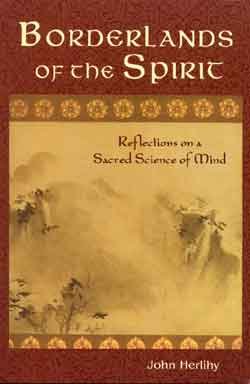
“Borderlands of the Spirit is a major step in the desperately needed resurrection of a ‘principial’ psychology, couched not in arcane alchemical symbols but in the common language of our time.”--Charles Upton, author of The System of Antichrist: Truth and Falsehood in Postmodernism and the New Age
“This is perhaps the best exposition of traditional cognitive psychology to have appeared in recent times. It is also a major contribution to the contemporary discourse on religion and science.”--Osman Baker, Malaysia Chair of Islam in Southeast Asia, Georgetown University.
Part of The Perennial Philosophy Series
(Bloomington: World Wisdom, 2005).
199 Pages.www.worldwisdom.com
ISBN 0-941532-67-4
University of Queensland Studies in Religion Students´ Association
Khthónios: A Journal for the Study of Religion
Volume II, No. 1

A student publication on all aspects of the academic study of religion. This issue includes articles such as “The Apocalypticism of Hildegard of Bingen: Vision 10, The Book of Divine Works” by Jeff Crocombe, and “Goddess Worship in Early Christianity: A Brief Look at the Collyridians” by Julie Washington.
(University of Queensland Studies in Religion Students´ Association, November 2004).
57 Pages.
ISSN 1448-1286
Alfred J. Gabay. The Covert Enlightenment: Eighteenth-Century Counterculture and Its Aftermath
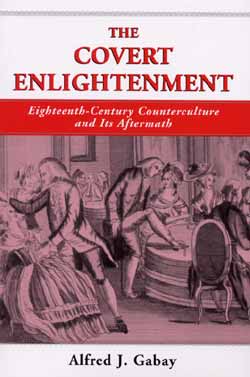
Dr. Alfred J. Gabay is a professor in the School of Arts and Education at La Trobe University, Bendigo, Victoria, Australia. He is the author of The Mystic Life of Alfred Deakin and Messages from Beyond.
“Gabay traces the complex web of interactions between ancient and early modern forms of occultism and mysticism. (Cabala, Hermeticism, Boehme, Paracelsus, the Catholic veneration of the Virgin) and the thought of two ‘enlightenment geniuses,’ Anton Mesmer and Emanual Swedenbog. His purpose is to show how the scientific, therapeutic, and ostensibly ‘rational’ theories of Mesmer melded with the religious revelations of Swedenborg to offer a new soteriology based on individual spiritual rejuvenation and a new understanding of the unconscious that contributed to the birth of modern psychology. This book will appeal to anyone interested in a deeper understanding of the complex forces that created the modern secular world.” --Allison P. Coudert, Paul A. And Marie Castlefranco Chair in Religious Studies, University of California at Davis.
(Swedenborg Foundation Publishers, 2005).
284 pages.
ISBN 0-87785-314-2
Paul Beekman Taylor. Gurdjieff’s America: Mediating the Miraculous.
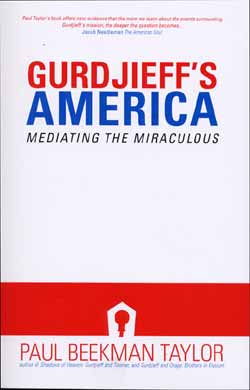
Gurdjieff’s America provides a wealth of new information and stories about Gurdjieff, setting him within cultural and social contexts of America between 1924 and 1935 more accurately and fully than earlier biographical writings. It shows Gurdjieff’s fascination with America and his project for using America as a model for a renewal of human consciousness. It describes his interaction with the New York literati--for and against his teaching--Lincoln Kirstein, Sinclair Lewis, John dos Passos, Ezra Pound, Thorton Wilder, Edmund Wilson. It also describes his interaction with architect Frank Lloyd Wright and the Russian painter and scene designer Nikolai Roerich. It shows the influence of Gurdjieff’s teaching, via Toomer, on the Harlem Renaissance writers. It shows his thought in the context of Moderism, Dadaism, Surrealism, Watsonian Behaviorism and post-war French Existentialism. It also shows the conflict of interests among his followers after his death, the resulting power struggles to organize and perpetuate his teachings.
(Lighthouse Editions, 2004).
336 pages. www.lighthouse-editions.com.
ISBN 1-90499-800-3
Wouter J. Hanegraaff, ed. Dictionary of Gnosis and Western Esotericism.

This is the first comprehensive reference work to cover the entire domain of “Gnosis and Western Esotericism” from the period of Late Antiquity to the present. Containing around 400 articles provided by over 180 international specialists, it provides critical overviews discussing the nature and historical development of all its important currents and manifestations, from Gnosticism and Hermeticism to Astrology, Alchemy and Magic, from the Hermetic Tradition of the Renaissance to the Rosicruicianism and Christian Theosophy, and from Freemasonry and Illuminism to 19th-century Occultism and the contemporary New Age movement. Furthermore it contains articles about the life and work of all the major personalities in the history of Gnosis and Western Esotericism, discussing their ideas, significance, and historical influence.
"The Dictionary of Gnosis and Western Esotericism is a brilliantly conceived and skillfully executed reference tool unlike anything the scholarly world has ever seen. In two massive volumes it covers ever aspect of pagan, Jewish, and Christian religious discourses and phenomena traditionally labeled gnosticism, hermeticism, astrology, magic, the "occult sciences," esoteric religion, and much more. The detailed and insightful articles, on nearly every related topic imaginable, are produced by an impressive array of scholars, and usefully include up-to-date bilbiographies. Six years in the making, this is a work that every student of religion, ancient and modern, will certainly want to own."--Bart D. Ehrman, James A. Gray Distinguished Professor and Chari of Religious Studies, University of North Carolina at Chapel Hill.
Edited by Wouter J. Hanegraaff in collaboration with Antoine Faivre, Roelof van den Broek, and Jean-Pierre Brach.
(Leiden: Brill, 2005).
1228 pages, 2 vols. www.brill.nl
ISBN 90-04-14187-1.